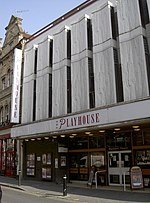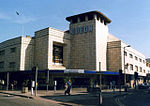Worlebury Camp

Worlebury Camp (also known as Worlebury Hillfort) is the site of an Iron Age hillfort on Worlebury Hill, north of Weston-super-Mare in Somerset, England. The fort was well defended with numerous walls, embankments and ditches around the site. Several large triangular platforms have been uncovered around the sides of the fort, lower down on the hillside. Nearly one hundred storage pits of various sizes were cut into the bedrock, and many of these contained human remains, coins, and other artefacts. During the 19th and 20th centuries the fort suffered damage and was threatened with complete destruction on multiple occasions. Now, the site is a designated Scheduled monument. It falls within the Weston Woods Local Nature Reserve which was declared to Natural England by the North Somerset Council in 2005.
Excerpt from the Wikipedia article Worlebury Camp (License: CC BY-SA 3.0, Authors, Images).Worlebury Camp
South Road,
Geographical coordinates (GPS) Address Nearby Places Show on map
Geographical coordinates (GPS)
| Latitude | Longitude |
|---|---|
| N 51.357425 ° | E -2.9851527777778 ° |
Address
South Road
South Road
BS23 2LU
England, United Kingdom
Open on Google Maps










